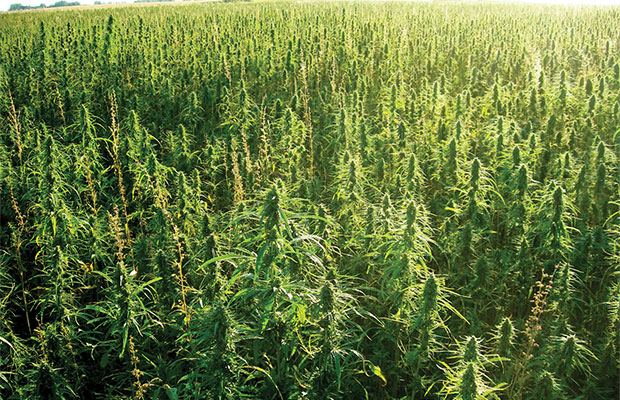
Current Events
Study of Cannabis & Hemp Genetics Calls For New Classifications
It all comes down to THC.
The difference between cannabis and hemp is often a cause for confusion and controversy. Both cannabis and hemp are from the species C. sativa and both are classified as illegal Schedule I drugs under the Controlled Substances Act. However, four states allow adult-use cannabis and 13 states allow industrial hemp production. The federal government continues to condemn the cannabis plant, but in 2014, a provision in the federal Farm Bill allowed universities and state departments to grow industrial hemp for academic research.
Popular misconceptions have tried to distinguish between the two by saying cannabis is female and hemp is male, or cannabis will get you high and hemp will not. In fact, the only legal difference between the two is an arbitrary line drawn that determined hemp was anything with less than 0.3 percent THC and cannabis was anything over.
However, the man who drew that arbitrary line in 1971, Ernest Small, also wrote, “There is not any natural point at which the cannabinoid content can be used to distinguish strains of hemp and marijuana.”
Since Small, the genetic differences between the two have not been studied in-depth. That is, until now.
In a study published on Wednesday in the scientific journal PLOS ONE, a team of Canadian researchers set out to provide a clearer picture of the scientific differences between cannabis and hemp. They studied the genotypes of 81 marijuana and 43 hemp samples and used DNA variants in the genome to find relationships between the two.
“As both public opinion and legislation in many countries shifts towards recognizing cannabis as a plant of medical and agricultural value, the genetic characterization of marijuana and hemp becomes increasingly important for both clinical research and crop improvement efforts,” wrote Jonathan Page, a University of British Columbia botanist, and Sean Myles, a population geneticist at Dalousie University, in the introduction to the study.
Page and Myles discovered that hemp had a high amount of genetic separation from cannabis after centuries of breeding the plants for different uses. The genetic differences were so stark that the researchers called for a new classification system to more reasonably separate marijuana from hemp.
“The genetic difference between marijuana and hemp has legal implications in many countries,” said Page. “Right now, the genetic identity of a marijuana strain cannot be accurately determined by its name or reported ancestry. Ultimately we require a practical, accurate and more reliable classification system of this plant.”
Page and Myles also found that cannabis plants are often incorrectly labeled between their three species of C. sativa, C. indica and C. ruderalis.
“Cannabis breeders and growers often indicate the percentage of Sativa or Indica in a cannabis strain, but they are not very accurate,” said Page in a press release.
The researchers also discovered that there was only a small correlation between the actual ancestry of a strain inferred from the DNA sequence and the ancestry that a strain’s breeder reported. For example, they wrote that a sample of Jamaican Lamb’s Bread that was classified as sativa was almost genetically identical to an indica from Afghanistan.
According to the study, this research was the first time an investigation of the cannabis population has been published using using a method called “high-throughput genotyping” which can investigate a genome more thoroughly.
Do you use hemp or cannabis-infused products? Tell us about it in the comments.























